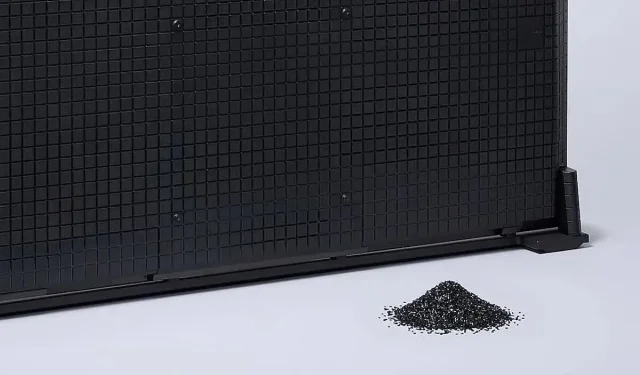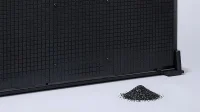More than ever, Sony is committed to sustainability, from the design process of its Bravia TVs to the way you watch them.
For several years, some Bravia TVs have been using SORPLAS, a 99% recycled plastic material that has reduced the amount of virgin plastic used by 60% for the back cover, which is nothing more than the bulk of the TV. Developed by the Sony team, it also allows for the careful selection of raw materials, compositional adjustments during production, and the use of an exclusive additive formula to achieve the most beautiful black lacquer effect.
One of the advantages of SORPLAS is that it degrades very little even after multiple processing. Parts recycled at SORPLAS provide an opportunity to reduce waste and contribute to the development of a society that recycles its waste.
“The environmental impact of televisions increases with the size of televisions and the number of units sold. In order to design larger TVs while reducing our environmental impact, we have been developing materials together with group companies since 2018 and have been using SORPLAS for interior and exterior parts that require a lot of plastic,” says Shusuke Tomonaga of Sony Home Entertainment & Sound.
“Using SORPLAS for external parts requires a lot of experience, but after many prototypes and improvements, we have created a plastic that can be used for the back shell, the surface of the TV. This material will be used for some 2021 Bravia XR models and will cut the amount of virgin plastic in half. In addition to SORPLAS, Bravia will also offer other recycled materials at all of its manufacturing sites and will continue its efforts to reduce its environmental impact worldwide.”
More sustainable packaging for Bravia TVs
After many simulations and decades of logistics experience, the package design that covers the top, bottom and sides has been optimized to protect the TV using less material and reduced cost (35% less than plastic). By redesigning the package to protect the product during shipping, Sony has reduced the size of the package by 15% and its weight by 10%. This multiplies by 1.3 the number of units on each pallet.
CO2 emissions per unit of product during transport are reduced by 15%. Finally, the product information printed on the packaging is simplified and shortened to reduce ink usage by 90% to reduce the environmental impact without redesigning the packaging.


